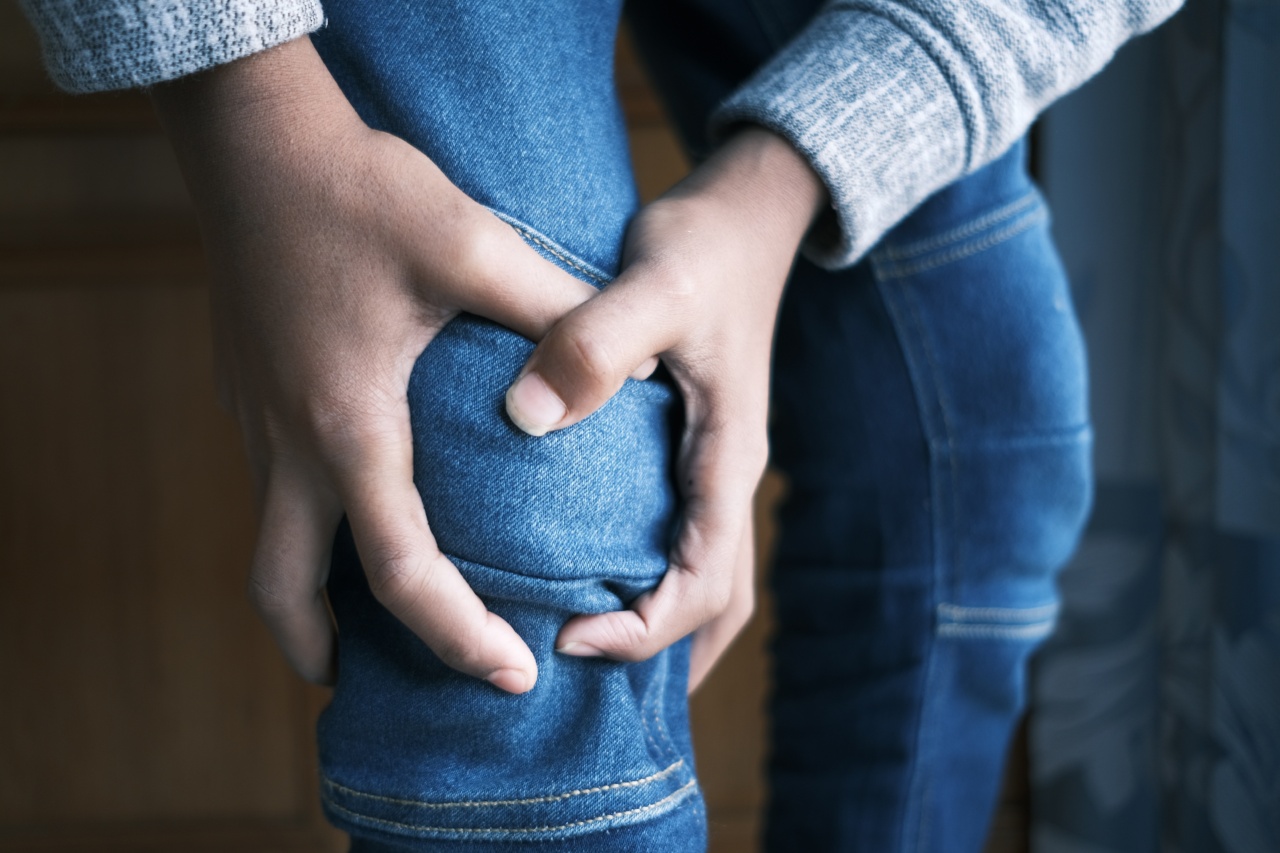Knee pain is a common condition that affects people of all ages and backgrounds. It can be caused by a variety of factors, including injury, overuse, and certain medical conditions.
Understanding the anatomy of the knee can help us better comprehend the roots of knee pain and the importance of seeking appropriate treatment.
The Knee Joint: A Complex Structure
The knee joint is the largest joint in the human body and is crucial for movement and stability. It connects the thigh bone (femur) to the shin bone (tibia) and is protected by the kneecap (patella).
Several ligaments, tendons, and muscles surround and support the knee joint.
Common Causes of Knee Pain
Knee pain can occur due to various reasons. Some of the most common causes include:.
1. Osteoarthritis
Osteoarthritis is a degenerative joint disease that commonly affects the knee. It causes the protective cartilage in the knee joint to wear away, leading to pain, stiffness, and swelling.
2. Ligament Injuries
Tearing or stretching of the ligaments in the knee, such as the anterior cruciate ligament (ACL) or medial collateral ligament (MCL), can result in knee pain and instability.
3. Meniscus Tears
The menisci are C-shaped pieces of cartilage that act as shock absorbers between the thigh bone and shin bone. A tear in the meniscus can cause knee pain, swelling, and limited range of motion.
4. Patellofemoral Pain Syndrome
Patellofemoral pain syndrome occurs when the patella rubs against the groove in the femur, causing pain and discomfort, especially during activities that involve bending the knee.
5. Bursitis
The bursae are small fluid-filled sacs that cushion the knee joint. Inflammation of the bursae, called bursitis, can lead to knee pain and swelling.
6. Osgood-Schlatter Disease
Osgood-Schlatter disease is a condition that primarily affects adolescents and is characterized by inflammation of the area just below the kneecap, where the tendon from the patella attaches to the shin bone.
7. Patellar Tendinitis
Patellar tendinitis, also known as jumper’s knee, involves inflammation of the tendon connecting the patella to the shin bone. It is common among athletes and individuals who frequently participate in activities that involve jumping.
8. Overuse and Repetitive Strain
Repeatedly subjecting the knee to excessive stress and strain, such as with certain sports or occupations, can lead to knee pain. Overuse injuries often result from inadequate rest or improper training techniques.
9. Rheumatoid Arthritis
Rheumatoid arthritis is an autoimmune disease that can affect multiple joints, including the knee. It causes inflammation, pain, and joint deformity.
10. Gout
Gout is a type of arthritis characterized by the deposition of uric acid crystals in the joints. When the knee joint is affected, it can cause sudden and severe pain, often accompanied by swelling and redness.
Treatment Options for Knee Pain
Treatment for knee pain depends on the underlying cause and severity of the condition. Some common treatment options include:.
1. Rest and Activity Modification
In many cases, resting the knee and avoiding activities that exacerbate the pain can help alleviate symptoms. Modifying activities to reduce impact and stress on the knee joint may also be beneficial.
2. Physical Therapy
A physical therapist can develop a customized exercise program to strengthen the muscles around the knee and improve joint stability. Physical therapy may also include techniques such as ultrasound, electrical stimulation, and manual therapy.
3. Medications
Over-the-counter non-steroidal anti-inflammatory drugs (NSAIDs) can help reduce pain and inflammation. In some cases, a healthcare provider may prescribe stronger pain medications or corticosteroid injections for more severe pain.
4. Assistive Devices
Utilizing assistive devices like crutches, a knee brace, or a cane can provide support and relieve pressure on the knee joint, promoting healing and reducing pain.
5. Surgery
If conservative treatments fail to alleviate knee pain, surgery may be necessary. Surgical interventions range from arthroscopic procedures to repair or remove damaged structures within the knee joint to partial or total knee replacement.
Prevention of Knee Pain
While not all knee injuries and conditions can be prevented, certain measures can be taken to reduce the risk of knee pain. These include:.
1. Regular Exercise and Strengthening
Engaging in regular exercise, such as low-impact activities, can strengthen the muscles supporting the knee and improve joint stability.
2. Proper Technique and Equipment
Using proper techniques and equipment during physical activities, particularly sports, can help prevent knee injuries. This may include using appropriate footwear, protective gear, and maintaining correct form.
3. Gradual Progression
Avoiding sudden increases in activity intensity or duration can help prevent overuse injuries. Gradually progressing exercise regimens allows the body to adapt and reduce the risk of strain on the knee joint.
4. Weight Management
Maintaining a healthy weight can significantly reduce the stress on weight-bearing joints, including the knees. Excess weight puts extra strain on the knee joint, increasing the likelihood of pain and injury.
Conclusion
Knee pain can have various causes, from injuries and overuse to medical conditions. Understanding the anatomy of the knee joint and the factors that contribute to knee pain is essential for proper diagnosis, treatment, and prevention.
If you experience persistent or severe knee pain, it is important to consult with a healthcare professional to determine the underlying cause and develop a suitable treatment plan.































